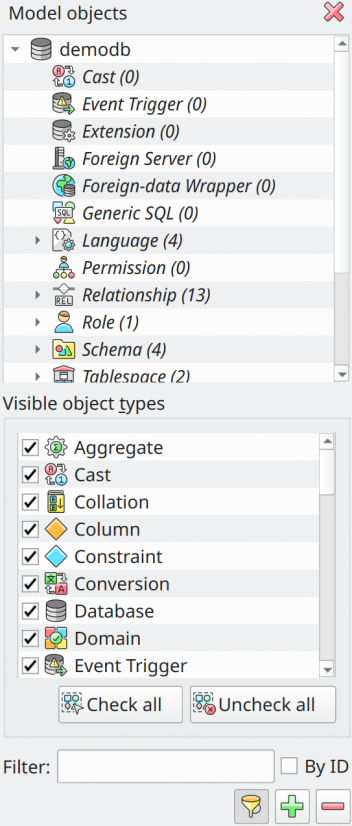6.5. Model objects
The model objects widget is used to organize the database objects hierarchically. As seen in the image, the objects are organized in the form of a tree where the root item is always the database object. Thus, the objects of the same type are placed under the group items (the ones with the label Object Type Name (n)). You can interact with any item by right-clicking it. In that case, the same menu as the one displayed when right-clicking an object on the canvas area will pop up.

It is possible to filter the current object's listing by clicking the icon ![]() and using the field
and using the field Filter. There, the user can type any filter keyword, and the current view will be automatically updated with the matching objects. By default, the filter works in the object's name, but if the user checks the option By ID, the typed keyword will be interpreted as an object ID (internally defined by pgModeler) and the filtering will search objects by their unique numeric identifier.
You can expand or collapse all items by respectively activating the buttons ![]() and
and ![]() . It's possible to filter which type of object to show on both views by toggling the visible object types in the listing
. It's possible to filter which type of object to show on both views by toggling the visible object types in the listing Visible object types on the filtering area. The view is automatically repopulated considering the new filter settings.
Finally, in the database objects tree, there will be red and green-labeled elements. In the first case, those elements represent protected or system objects (created by pgModeler to be used just as references), and they can't be modified or even deleted. In the second case, the objects are the ones created by relationships, and like the protected objects, they can't be directly modified by the user.